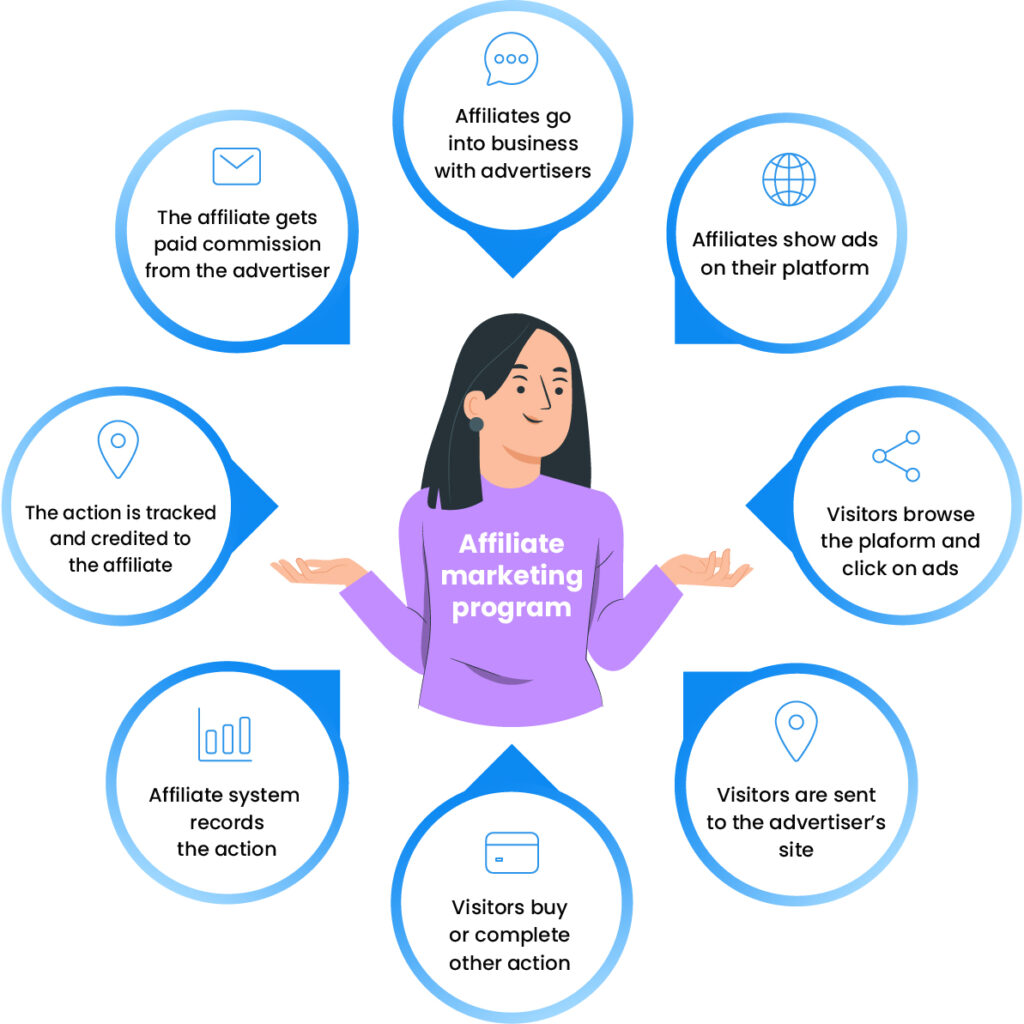Clients have been asking me whether affiliate marketing is a good strategy for startups and other businesses trying to grow. They often sound sceptical but my answer is always YES. If I had to point out any disadvanteges of starting an affiliate program in an early stage of growth, only very few would come to my mind, if any. I will get to these later, let’s focus on the advantages first.
The Pros Of Running An Affiliate Program
To make sure that we’re all on the same page, let’s see Wikipedia’s definition of affiliate marketing:
“Affiliate marketing is a type of performance-based marketing in which a business rewards one or more affiliates for each visitor or customer brought by the affiliate’s own marketing efforts. The industry has four core players: the merchant (also known as ‘retailer’ or ‘brand’), the network (that contains offers for the affiliate to choose from and also takes care of the payments), the publisher (also known as ‘the affiliate’), and the customer”.
– Wikipedia, The Free Encyclopedia
For those of you, who prefer visualisation over text, here’s a short video on what affiliate marketing is and how Post Affiliate Pro works:

Why Is Affiliate Marketing A Good Option For Startups?
According to eMarketer, “46% of marketers consider affiliate marketing to be “very cost effective” as it relates to customer acquisition, second only to email”.
- You only pay for results
Unlike traditional advertising methods, affiliate marketing is the most cost effective one. If your affiliates don’t perform and bring leads, they simply don’t get paid. Have you ever received a check from Google saying that your AdWords didn’t bring enough revenue so they’re giving you your money back? Me neither. - You don’t spend time on advertising
Let others do the work for you so you can worry about other, more important issues, or issues that you have skills for. You don’t need to be a marketing expert, neither you have to learn any marketing methods to run an affiliate program. Simply setup your affiliate program and then payout your affiliates once a month. That’s where your job ends. - Get lots of traffic and improved SEO
Lots of affiliates generate lots of backlinks. In addition Post Affiliate Pro makse sure that all of your links are SEO friendly. - Find Super affiliates and you’re golden
You don’t need hundreds of affiliates to succesfully run an affiliate program. In general, most of businesses have 3-5 Super affiliates who generate more than 50% of the revenue from their whole affiliate program.

What are super affiliates and how can I find them? Stay in touch, subscribe to our newsletter and you will find out in our next week’s blogpost! Meanwhile you can test Post Affiliate Pro in a free Demo.
Share this article
Discover Post Affiliate Pro's flexible pricing plans tailored to fit your business needs, with options for Pro, Ultimate, and Network packages. Enjoy a free trial with no credit card required, no setup fees, and the freedom to cancel anytime. Benefit from features like unlimited affiliates, advanced reporting, customizable interfaces, and lifetime support. Save up to 20% with annual billing and take advantage of more than 220 integrations. Perfect for businesses seeking to enhance their affiliate marketing efforts. Visit now to find the ideal plan for you!
The leader in Affiliate software
Post Affiliate Pro offers a comprehensive affiliate software platform to manage multiple affiliate programs with ease. Enjoy no setup fees, 24/7 customer support, and a free 1-month trial. Ideal for small and large businesses, it features precise tracking, automated workflows, and customizable tools to boost your affiliate marketing success. Try it now and streamline your affiliate operations effortlessly!
Affiliate marketing email templates
Discover expertly crafted email templates for affiliate marketing with Post Affiliate Pro. Enhance your communication by motivating, acknowledging, and engaging affiliates effectively. From terms and conditions to product launches, these templates ensure clear and consistent messaging to boost your affiliate program's success. Visit now to streamline your affiliate communication!
How To Find Affiliates to Sell Your Products
Discover over 10 successful strategies for finding high-quality affiliates in 2024 to boost your product sales. Learn to leverage influencers, join affiliate networks, and enhance your reach through SEO and social media. Maximize revenue with transparency and ongoing monitoring in your affiliate marketing program.
6 reasons to use a third-party affiliate management system
Discover the top 6 reasons to invest in a third-party affiliate management system. Simplify your affiliate marketing with automated tracking, fraud detection, and user-friendly solutions that save time and reduce costs. Boost your business's efficiency and gain more control over your affiliate programs today.











